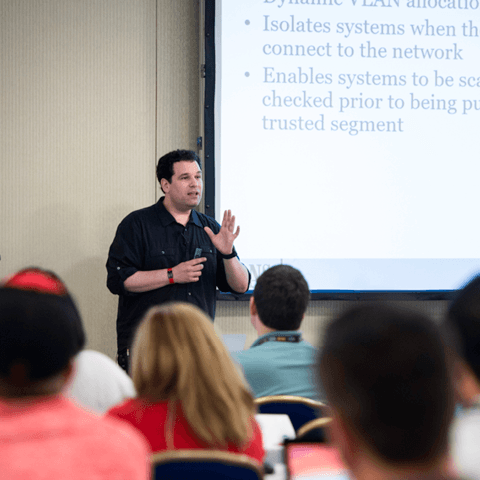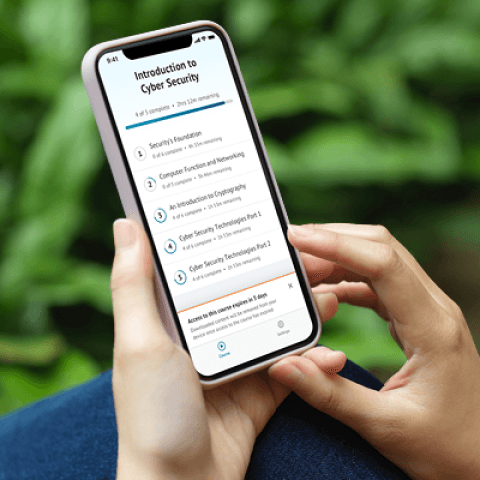SEC595: Applied Data Science and AI/Machine Learning for Cybersecurity Professionals


Experience SANS training through course previews.
Learn MoreLet us help.
Contact usBecome a member for instant access to our free resources.
Sign UpWe're here to help.
Contact Us
Apply your credits to renew your certifications
Attend a live, instructor-led class at a location near you or remotely, or train on your time over 4 months
Course material is geared for cyber security professionals with hands-on experience
Apply what you learn with hands-on exercises and labs
Prevent cloud incidents from becoming breaches with attack-driven controls. Explore real-world case studies, build multicloud defenses, and secure emerging GenAI workloads through hands-on labs.
The course provided so much information and details about security misconfigurations and mistakes in the cloud that one would not believe fit into the week. Very comprehensive, but the scary thing is that it feels like it is barely scratching the surface! Awesome job by the course authors.
Protecting multicloud environments is tough but essential. Default controls often fall short, and what works for one CSP may fail in another. SEC510 delivers advanced training for engineering cloud security defenses across AWS, Azure, and GCP, emphasizing attack-driven strategies over compliance. Students also gain skills to secure modern data environments, from encryption and ransomware protection to defending GenAI workloads, learning practical controls that reduce risk and safeguard critical assets at scale.


Brandon is a Partner at Cyverity and SANS Senior Instructor at the SANS Institute. He is lead author for SEC510: Cloud Security Engineering and Controls; GPCS holder #1, multi-year RSA Conference presenter, and cloud Bug Bounty collector.
Read more about Brandon Evans

Eric is a co-founder and principal security engineer at Puma Security, focusing on cloud security, Kubernetes, and DevSecOps automation. A SANS Fellow, he is co-author and instructor for three SANS Cloud Security courses.
Read more about Eric JohnsonExplore the course syllabus below to view the full range of topics covered in SEC510: Cloud Security Engineering and Controls.
SEC510 begins with cloud breach trends and the challenges of multicloud. Students explore IAM and machine identity risks, practice real-world attacks, and use tools like IAM analyzers to detect Broken Access Control. The section ends with strategies to prevent privilege escalation.
Section 2 focuses on securing cloud infrastructure and data by locking down network access. Students learn to restrict traffic, secure VMs, use private endpoints for PaaS, prevent RCE with data exfiltration, and analyze flow logs to detect malicious activity across all three major clouds.
Section 3 focuses on cloud data security, covering encryption, secure storage, ransomware defense, and access control. Students explore key management, in-transit encryption, and advanced storage protections like file versioning, data retention, and detecting sensitive data exposure.
Section 4 covers securing cloud app infrastructure and users, starting with serverless FaaS benefits and risks. Students harden real serverless functions, explore Customer Identity and Access Management (CIAM) threats like account takeover via Amazon Cognito, and protect the most critical services in Google Cloud’s Firebase platform.
The final section covers multicloud operations, focusing on IAM risks, safe credential use, and Workload Identity Federation. Students automate security checks with CSPM tools, explore trust issues with third-party platforms, and study how to mitigate a real cloud security vendor vulnerability using Microsoft Defender as a case study.
Cloud Security Engineers integrate advanced security measures into cloud and cloud-native environments, maximize security automation within DevOps workflows, and proactively mitigate threats to safeguard modern cloud infrastructures.
Explore learning pathA Cloud Security Analyst monitors and analyzes activity across cloud environments, proactively detects and assesses threats, and implements preventive controls and targeted defenses to protect critical business systems and data.
Explore learning pathResponsible for ensuring that security requirements are adequately addressed in all aspects of enterprise architecture, including reference models, segment and solution architectures, and the resulting systems that protect and support organizational mission and business processes.
Explore learning pathResponsible for conducting software and systems engineering and software systems research to develop new capabilities with fully integrated cybersecurity. Conducts comprehensive technology research to evaluate potential vulnerabilities in cyberspace systems.
Explore learning pathResponsible for developing and maintaining business, systems, and information processes to support enterprise mission needs. Develops technology rules and requirements that describe baseline and target architectures.
Explore learning pathResponsible for the secure design, development, and testing of systems and the evaluation of system security throughout the systems development life cycle.
Explore learning pathAdd a GIAC certification attempt and receive free two practice tests. View pricing in the info icons below.
When purchasing a live instructor-led class, add an additional 4 months of online access after your course. View pricing in the info icons below.
One of the best SANS courses I have taken. I am going to recommend this training to other company InfoSec Professionals in our company.
I maintain that this is the single best SANS class available (and I just got my 8th cert). If you can only take one course - this is the one.
If you Cloud, you need this course - <period>.
I would definitely recommend this course. I consider the security topics covered to be critical knowledge for companies that are hosting in the cloud. The course content has been very well put together, well researched, and is very applicable.

Get feedback from the world’s best cybersecurity experts and instructors

Choose how you want to learn - online, on demand, or at our live in-person training events

Get access to our range of industry-leading courses and resources